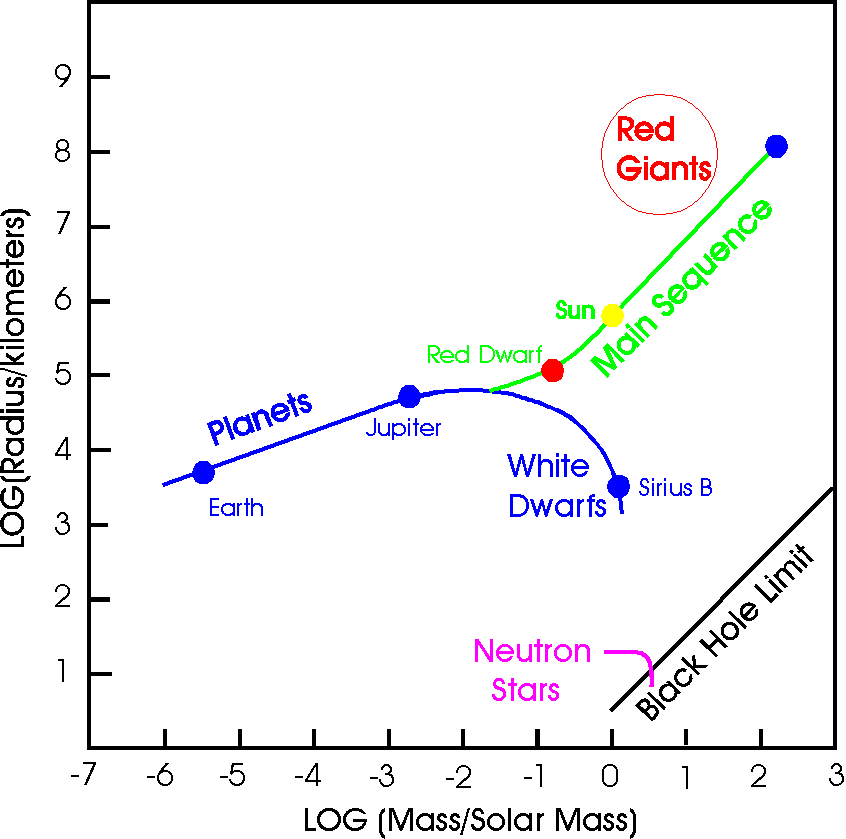
1. INTRODUCTION
Neutron stars and black holes involve such extreme physical conditions that they seem like science fiction; indeed, these objects have stimulated many science fiction stories and movies -- mostly second-rate. The facts are far more interesting than fiction. When I began studying astrophysics in the early 1960s, few astronomers took these ideas very seriously. But today we know that neutron stars and black holes are as real as the ground under your feet!
We already bumped up against the idea of neutron stars and black holes in Lesson 6 when we studied white dwarfs. Below is the same
mass-radius diagram that you saw in that lesson.
As you recall, this diagram shows that a white dwarf star such as Sirius B has a radius slightly greater than 103 km, less than that of the Earth. If you added mass to Sirius B, it would shrink. You can see that when the mass exceeds the Chandrasekhar limit of 1.4 Solar masses, the radius (shown by the blue line) drops almost vertically. But the violet curve shows that there is another stable kind of star, with radius about 10 km and mass ranging up to about 3 Solar masses (Log mass = 0.5). That is the curve representing the mass-radius relationship of a
neutron star, a new state of matter first predicted in the 1930s by Russian physicist Lev Landau and Swiss astrophysicist Fritz Zwicky (see table below).But, as the violet curve shows, when the mass of a neutron star exceeds about 3 Solar masses*, the neutron star will also collapse. According to Einstein's theory, any object with mass and radius lying to the lower right of the diagonal line marked "Black Hole Limit" must collapse to a point. As you will see, astronomers have discovered black holes too.
In this Lesson, we will describe the evidence that neutron stars and black holes exist and some of the fantastic phenomena exhibited by these objects.
*Actually, the maximum mass of a neutron star is somewhat uncertain, owing to our uncertainty about how nuclear forces behave at such great densities. The limit is probably somewhere between 2.0 and 3.0 solar masses.
Last modified March 1, 2000
Copyright by Richard McCray